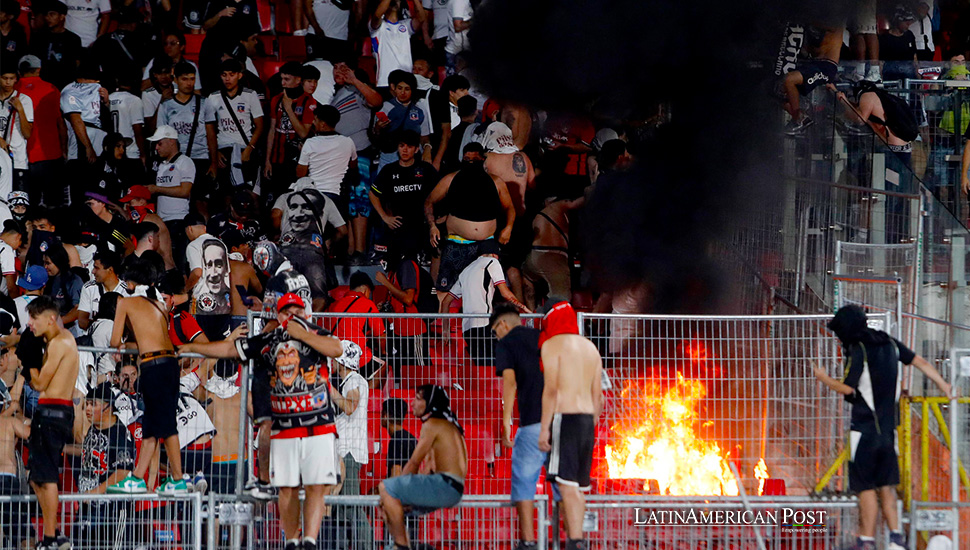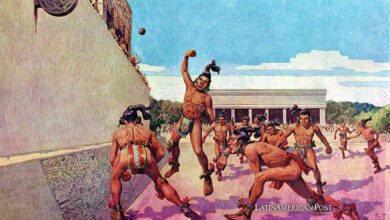Navigating the Turbulent Waters of Fan Violence in Latin American Soccer Following Chile’s Colo Colo’s Fanbase Ban

In the wake of violent incidents by Colo Colo’s fanbase during the Chilean Supercup final, Unión Española and O’Higgins have taken a stand by barring visiting supporters, highlighting a broader issue of fan violence plaguing Latin American soccer and the urgent need for comprehensive solutions.
Latin American Soccer at a Crossroads
With its passionate fans and vibrant culture, Latin American soccer stands at a crossroads. Recent events in Chile, where Unión Española and O’Higgins announced bans on visiting Colo Colo supporters following violent outbreaks at the Supercup final, underscore a persistent and troubling issue that transcends national boundaries: fan violence. While immediate and necessary, this decision opens up a larger conversation about soccer culture in Latin America, the historical context of fan groups, and the urgent need for a unified approach to reform.
Fan violence is not a new phenomenon in Latin American soccer. Historically, the sport has reflected societal tensions, with soccer clubs often serving as focal points for community identity and, occasionally, political and social unrest. The “barras bravas,” as these fan groups are known in many Latin American countries, have roots deep into the fabric of soccer culture, often blurring the lines between emotional support and aggressive territorialism.
The recent incident involving Colo Colo’s “Garra Blanca” in Chile is a stark reminder of the volatility of these groups. The violence not only led to the suspension of the Supercup final but also resulted in injuries, arrests, and significant financial damage. This event is not isolated; it reflects a broader issue that has seen similar situations unfold across the region. From Argentina’s “Barras Bravas” to Brazil’s “Torcidas Organizadas,” the stories of fan violence leading to tragedy are all too familiar. For example, the tragic death of a fan in the aftermath of a match between Atlético Nacional and Independiente del Valle in Colombia serves as a sad reminder of the potential consequences of unchecked fan aggression.
Reactive Measures and the Need for Reform
While prudent, the responses by Unión Española and O’Higgins highlight the reactive nature of current strategies to combat fan violence. Though intended to prevent further incidents, the bans on visiting fans do not address the underlying causes of such violence. It’s a band-aid solution to a deeply entrenched problem that requires a multifaceted approach, including community engagement, education, and the reform of fan clubs.
The challenge lies in balancing the passion that makes Latin American soccer unique with the safety and security of all involved. Lessons can be drawn from other countries within the region that have faced similar challenges. For instance, implementing the “Afanar” project in Argentina, which focuses on community outreach and the reintegration of at-risk fans, offers a blueprint for using social initiatives to address the root causes of violence.
Moreover, the role of soccer clubs and national soccer associations is crucial in fostering a culture of respect and responsibility. Initiatives such as the “Fútbol para la Paz” (Soccer for Peace) in Colombia, which uses soccer as a tool for social cohesion and conflict resolution, demonstrate the potential for sport to be a force for positive change.
The legal and regulatory framework also plays a critical role. The enactment of stringent laws against violence and discrimination in soccer, similar to those in European soccer, could provide a deterrent against future incidents. However, enforcement remains challenging, necessitating cooperation between clubs, law enforcement, and the community.
Players as Advocates for Change
The statement by Mendoza’s Provincial Subsecretary of Sports, Federico Chiapetta, in anticipation of the Copa Libertadores match, underscores the importance of security and the expectation of a “soccer festival.” This sentiment should be the norm, not the exception, requiring a collective effort from all stakeholders in Latin American soccer to ensure that the sport remains a source of joy and unity rather than division and violence.
Arturo Vidal’s involvement in the controversy highlights players’ influential role in condemning violence and promoting a positive fan culture. As figures of public admiration, players can advocate for change and positively influence fan behavior.
The incidents in Chile were critical for Latin American soccer. The path forward requires more than just temporary bans or isolated measures; it necessitates a comprehensive strategy addressing fan violence’s cultural, social, and legal dimensions. By learning from past incidents and implementing proactive, community-focused initiatives, Latin American soccer can begin to heal and move towards a future where the beautiful game is celebrated for its ability to bring people together rather than tear them apart.





